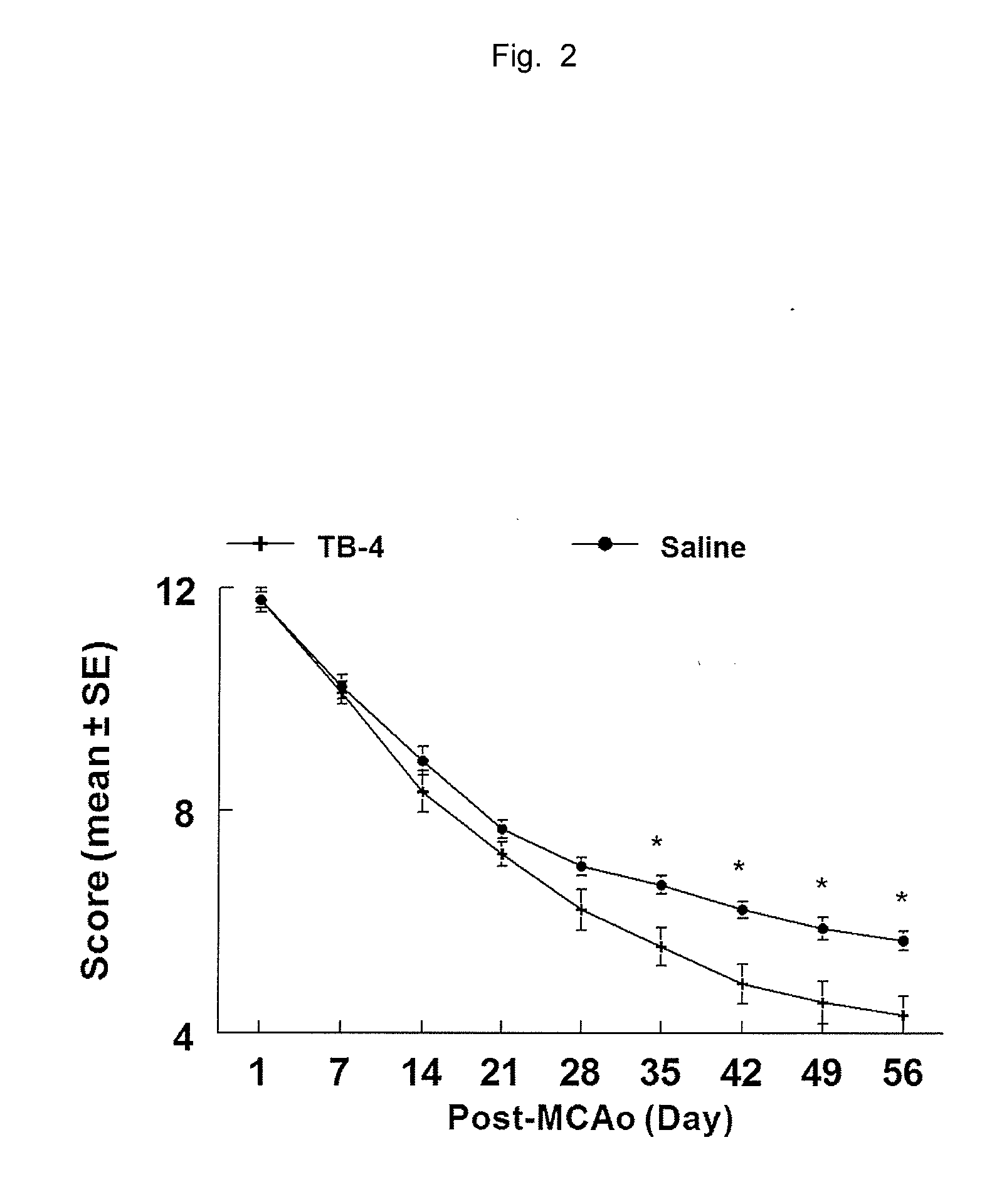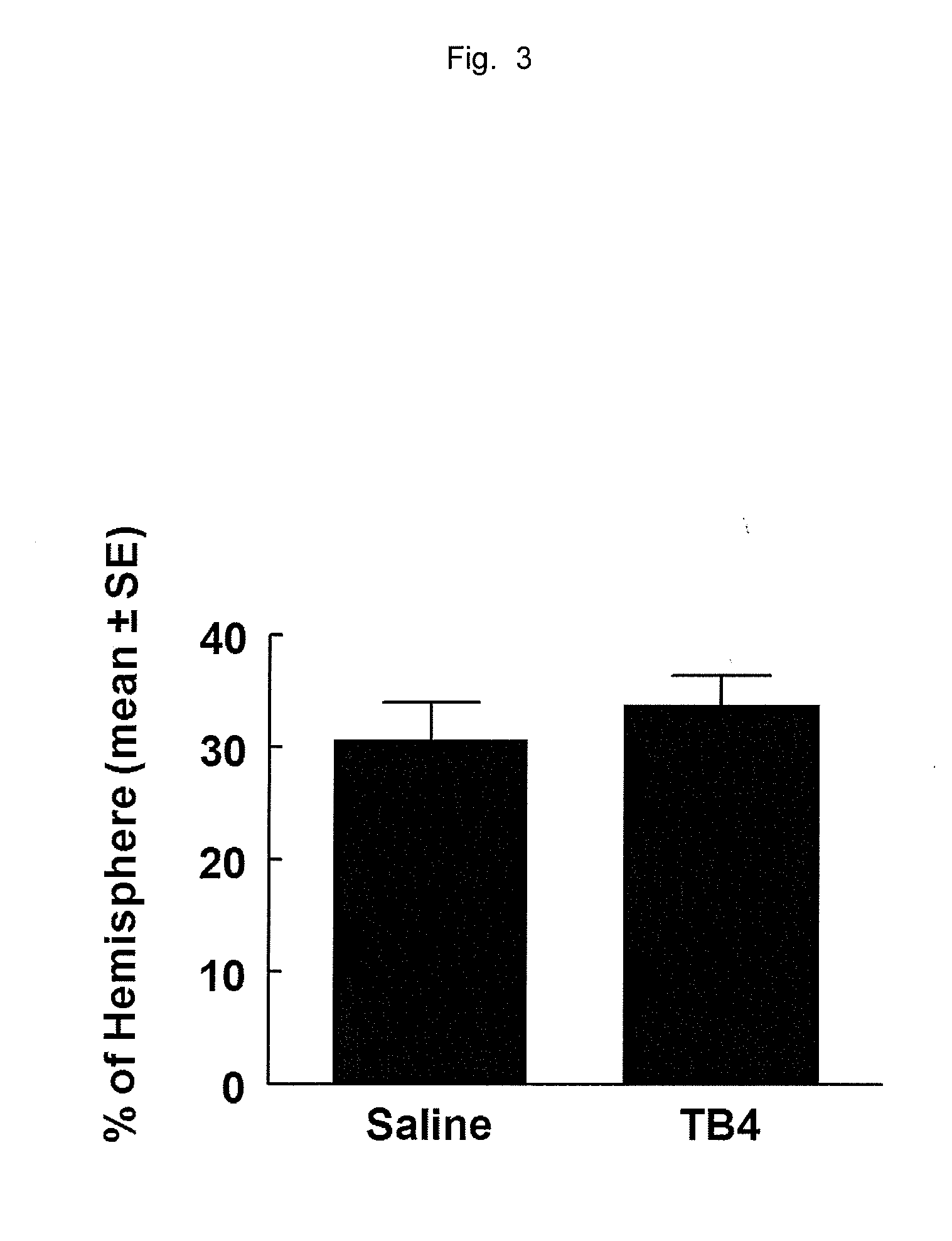Methods for improving neurological outcome after neural injury and neurodegenerative disease
a neurodegenerative disease and neural injury technology, applied in the field of oligodendrogenesis, can solve the problems of neurological impairment, neurological impairment, morbidity and disability, etc., and achieve the effect of improving the functional neurological outcom
- Summary
- Abstract
- Description
- Claims
- Application Information
AI Technical Summary
Benefits of technology
Problems solved by technology
Method used
Image
Examples
examples
[0044]Methods
[0045]Effectiveness of treatment with thymosin β4 was tested in stroke (middle cerebral artery occlusion (MCAo)) rats and in experimental autoimmune encephalomyelitis (EAE) mice (a well-established in vivo model for multiple sclerosis). Both the stroke rats and the EAE mice were treated with 6 mg / kg thymosin β4 intraperitoneally (IP) in a volume of 0.3 mL twenty-four hours after stroke or after the day of immunization in the EAE model and then every three days (6 mg / kg IP) for four additional doses. An equal volume of saline was administered (IP) to a group of both stroke rats and EAE mice as a control. Bromodeoxyuridine (BrdU; 100 mg / kg) was administered (IP) daily for seven days, initiated 24 hours after MCAo to label proliferating cells. Behavioral tests (adhesive removable test and NSS (Neurological Severity Score)) were performed immediately before treatment and at days 1, 7, 14, 21, 28, 35, 42, 49, and 56 days after MCAo and up to 30 days in the EAE mouse model. A...
PUM
| Property | Measurement | Unit |
|---|---|---|
| volume | aaaaa | aaaaa |
| neurological disorder | aaaaa | aaaaa |
| axonal plasticity | aaaaa | aaaaa |
Abstract
Description
Claims
Application Information
 Login to View More
Login to View More - R&D
- Intellectual Property
- Life Sciences
- Materials
- Tech Scout
- Unparalleled Data Quality
- Higher Quality Content
- 60% Fewer Hallucinations
Browse by: Latest US Patents, China's latest patents, Technical Efficacy Thesaurus, Application Domain, Technology Topic, Popular Technical Reports.
© 2025 PatSnap. All rights reserved.Legal|Privacy policy|Modern Slavery Act Transparency Statement|Sitemap|About US| Contact US: help@patsnap.com



